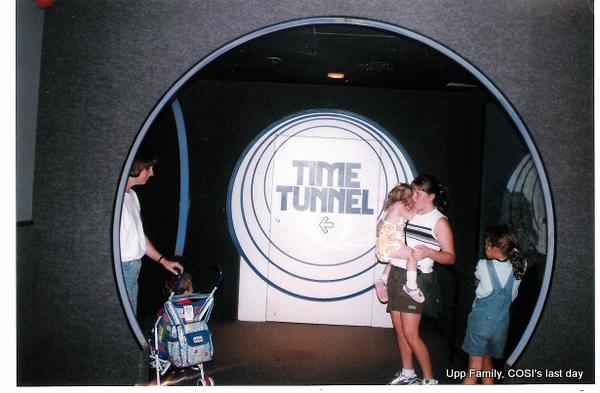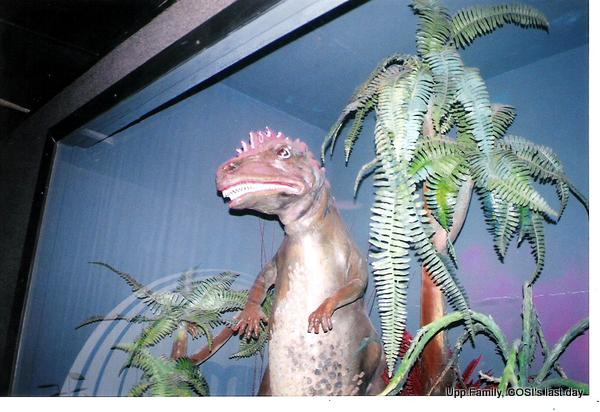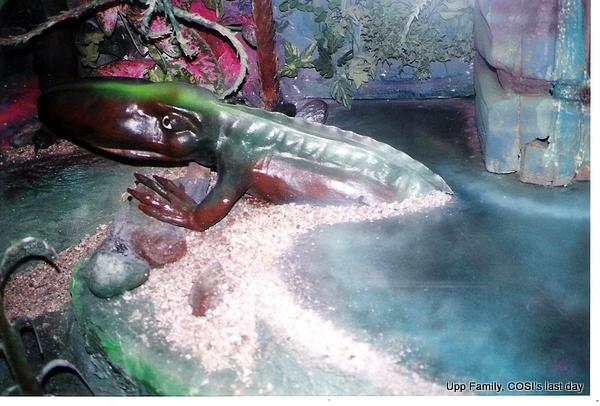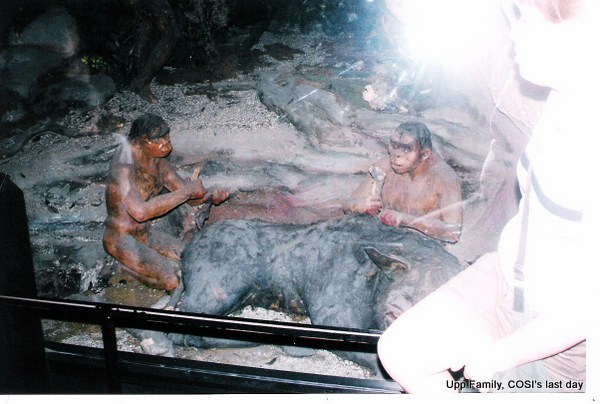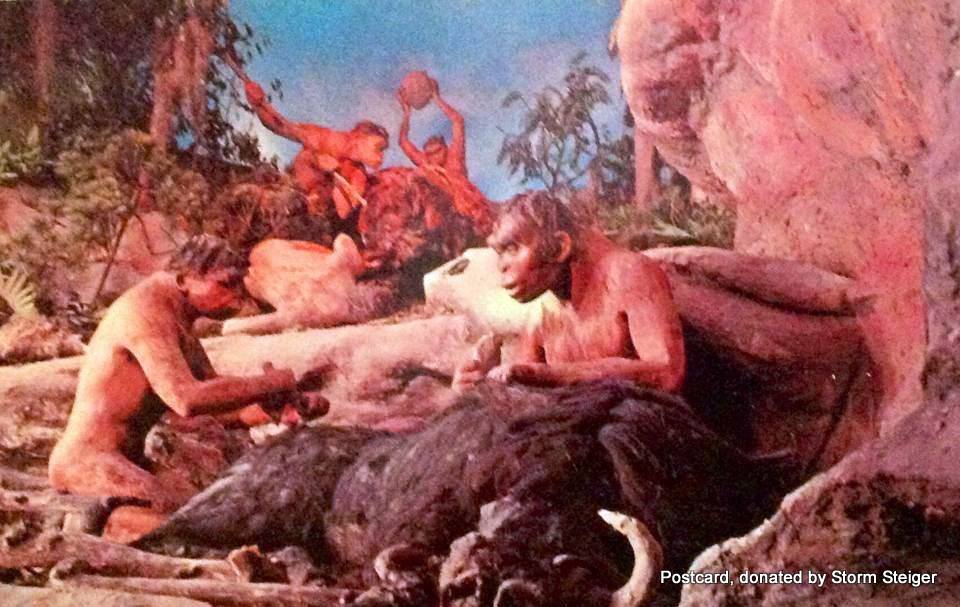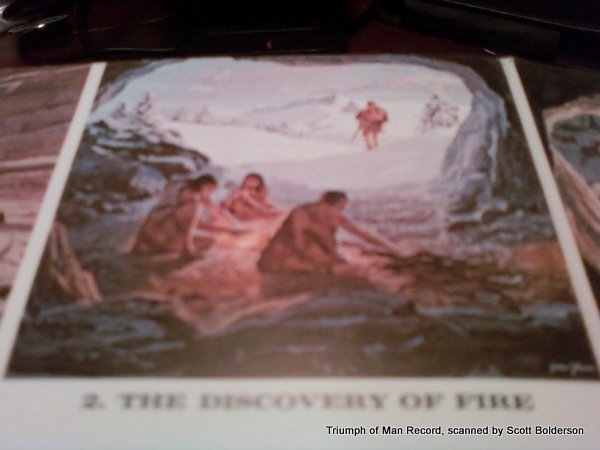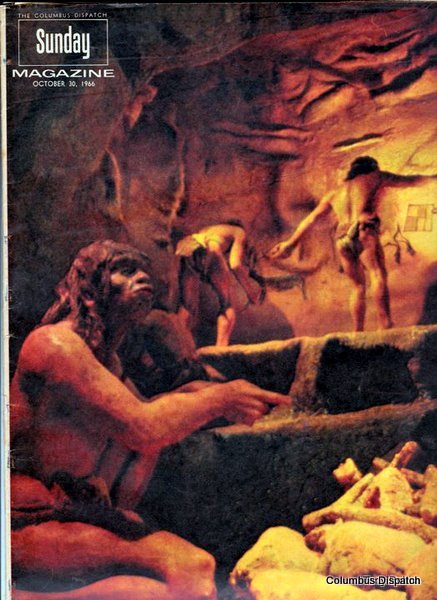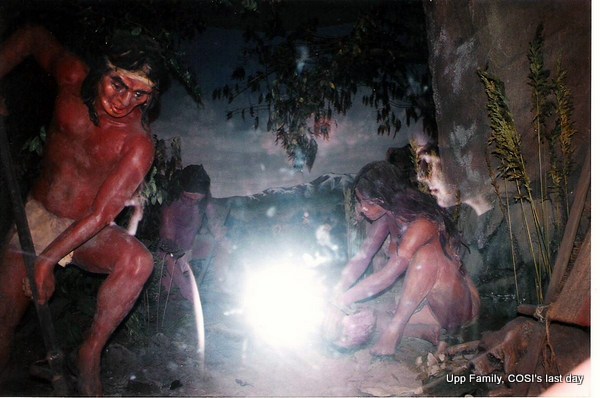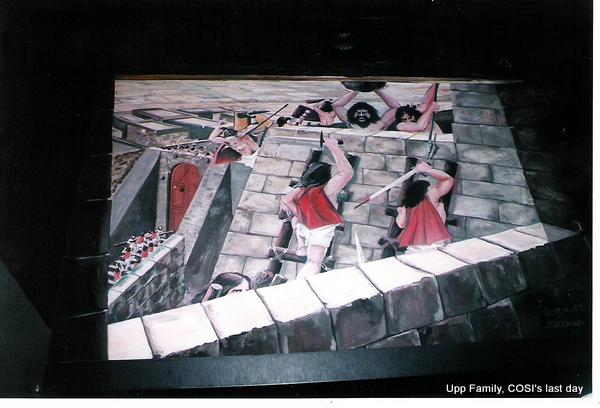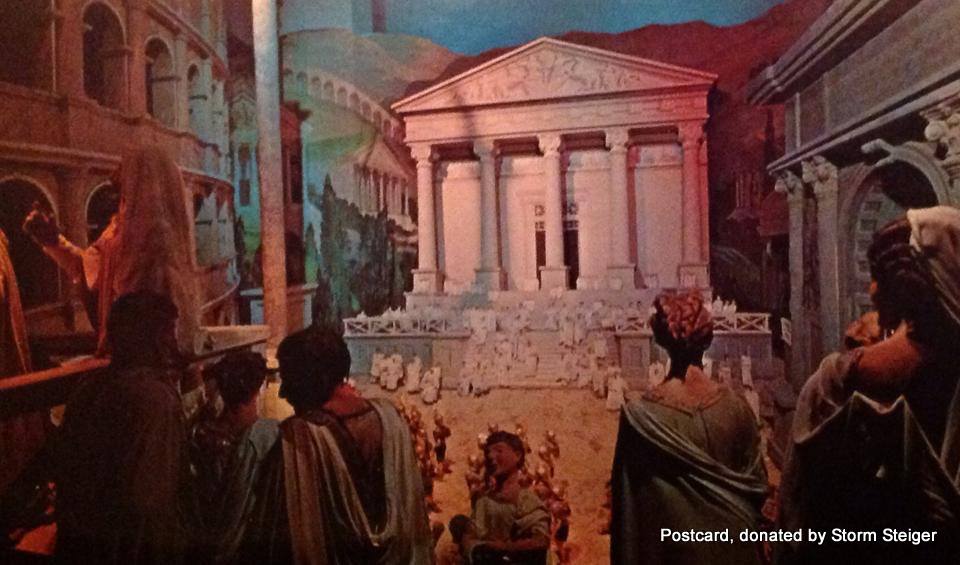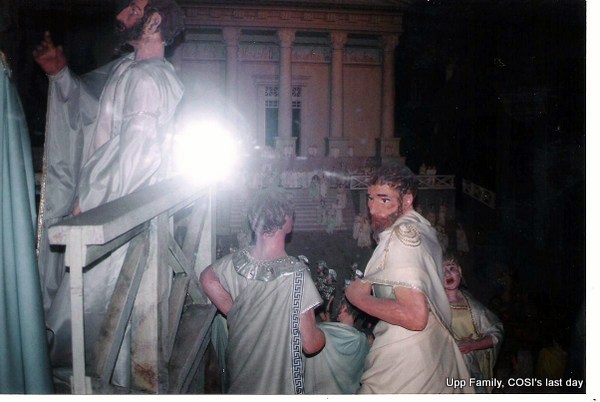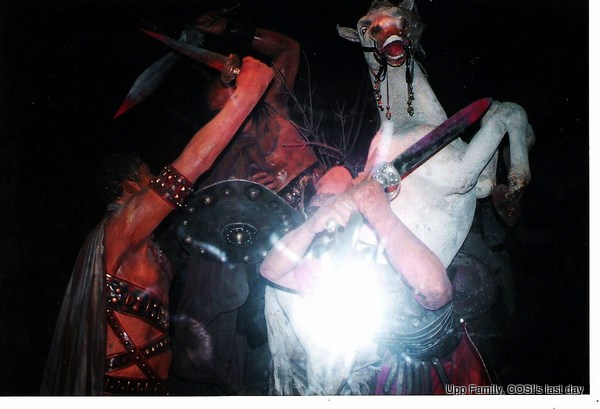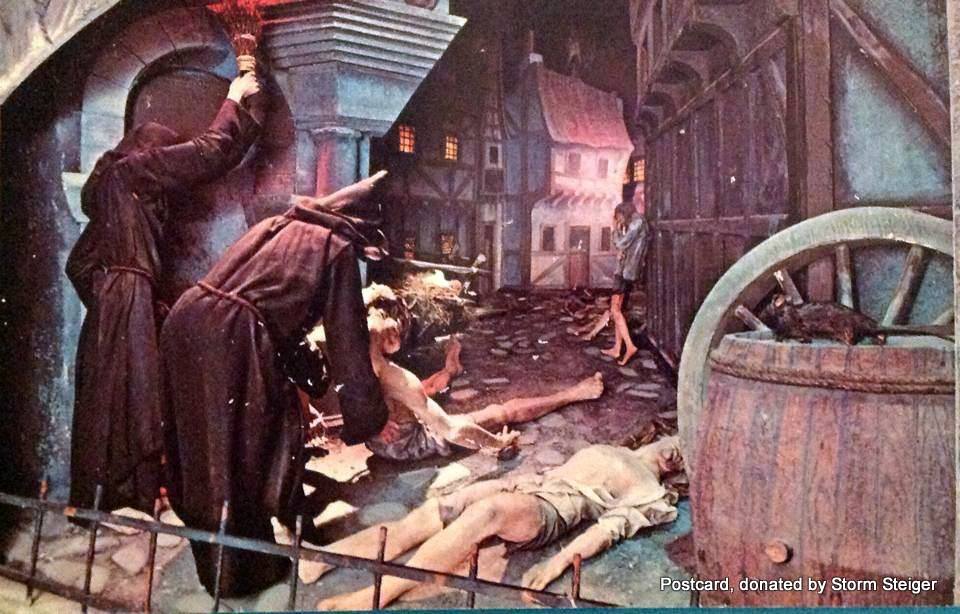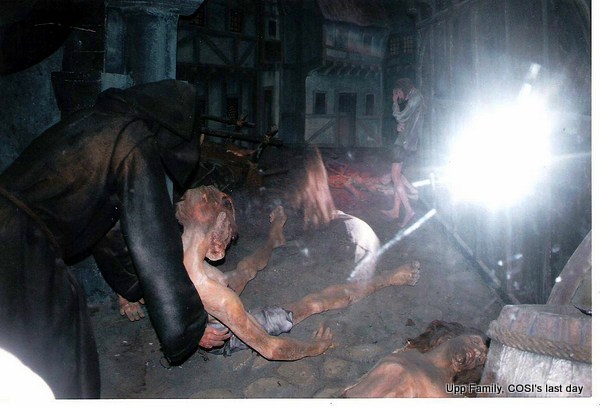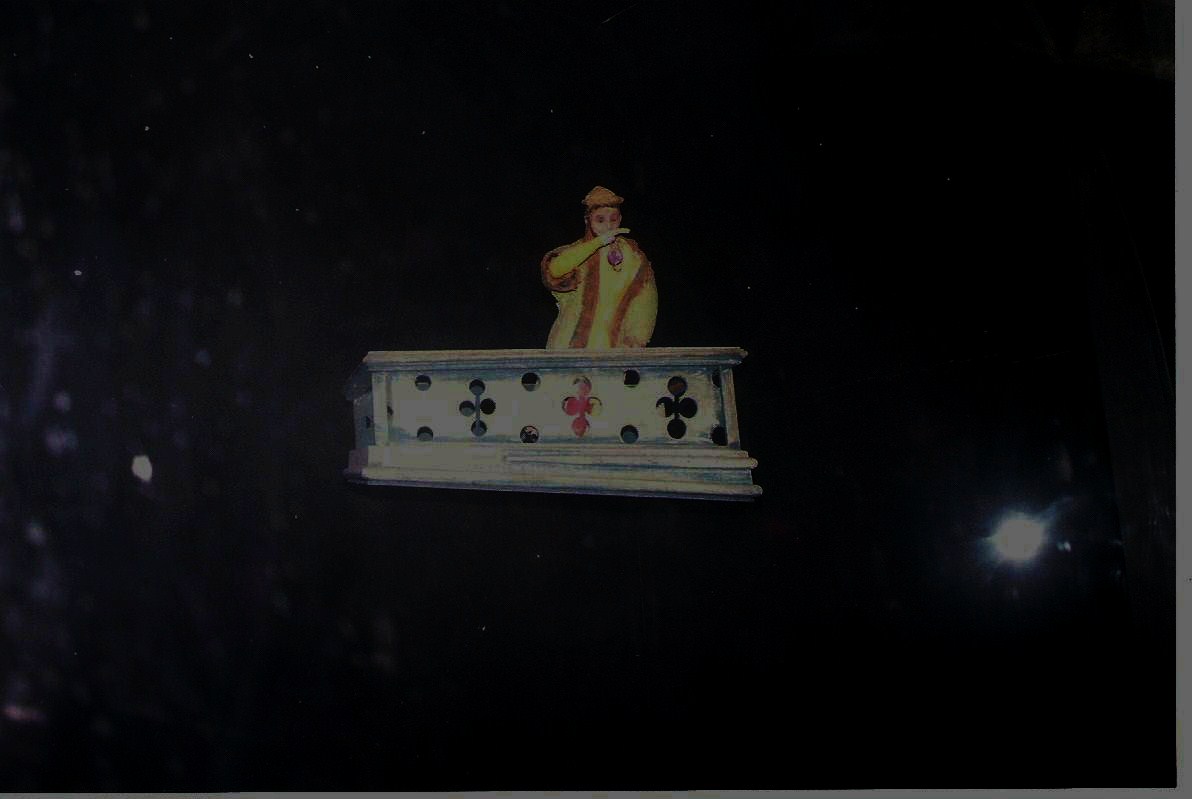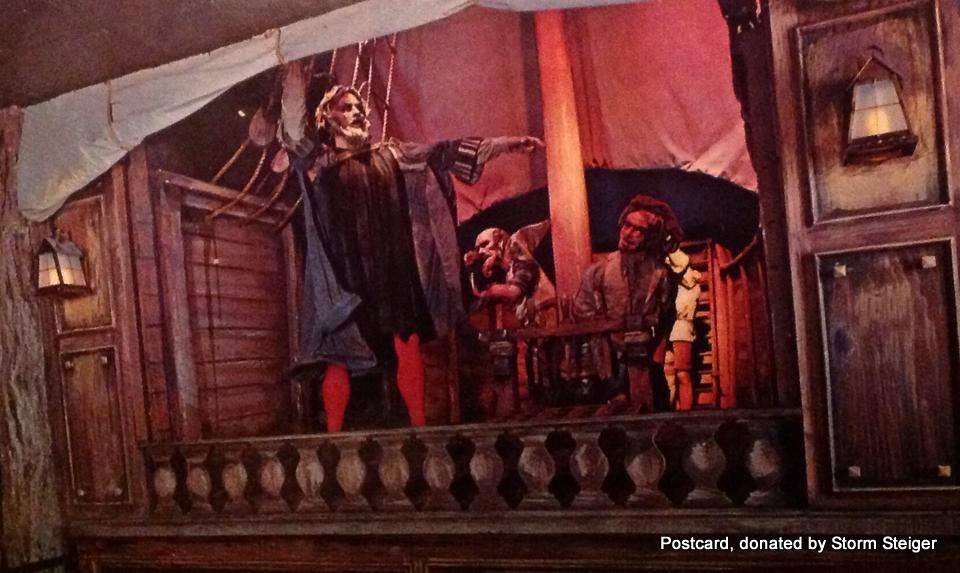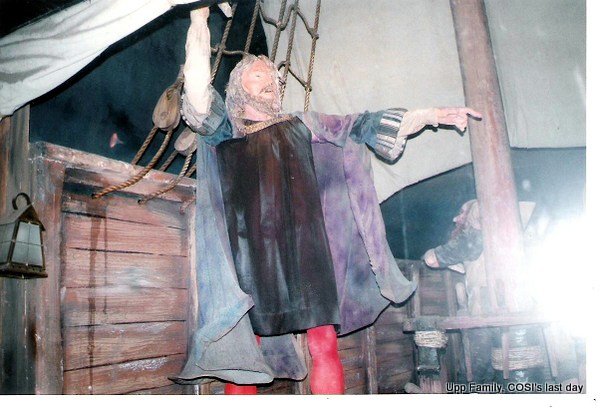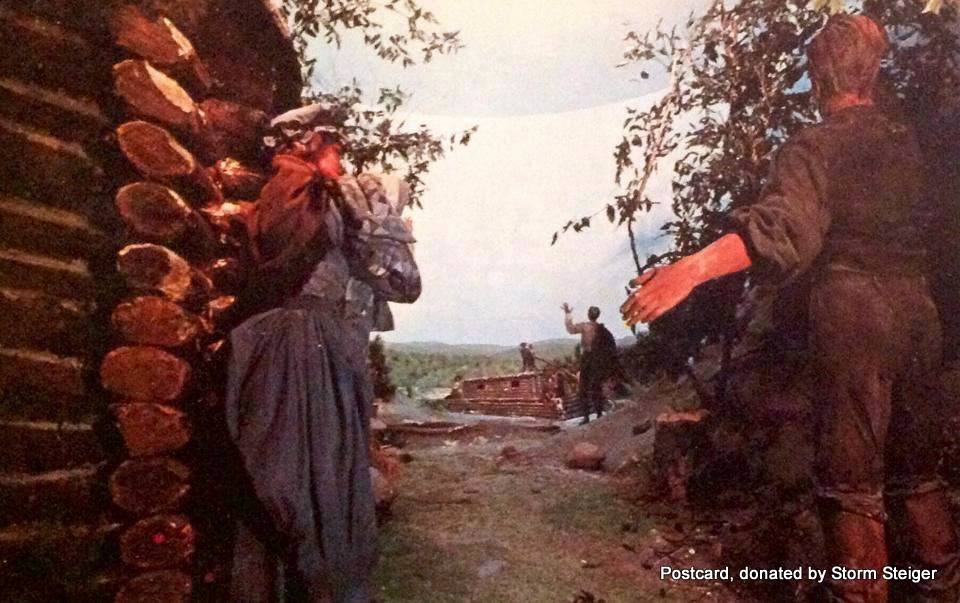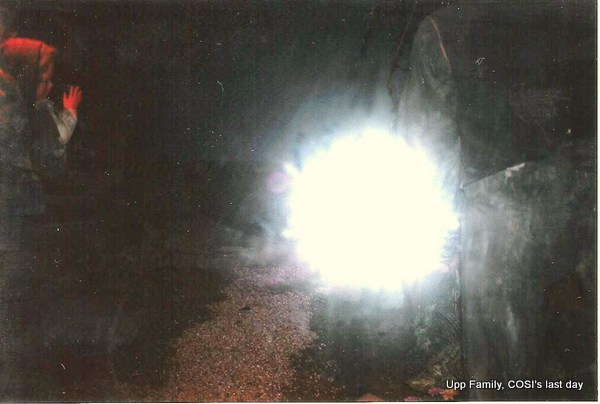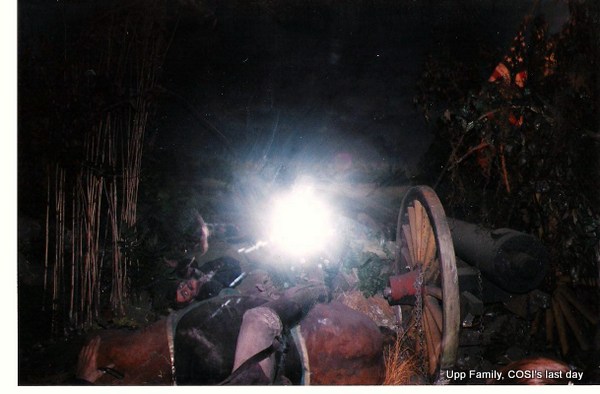Welcome to the Time Tunnel. The displays in this tunnel were originally at a world's fair and called the "Triumph of Man." The Tunnel used to be a guided tour. "Fanfare for the Common Man" used to commonly play here and I have also been told that the 2001 theme and Age of Discovery played.
Through the Time Tunnel's 13 displays we will explore the rise of civilization (in particular Western Civilization) from dinosaurs to the present. Signs will guide you as you explore the different ages of man. Are you ready to travel through time?
If you want to hear/experience the original World Fair's experience, check out this by Tom Lutherman
Dinosaurs: First we see time long before humans were on the planet. Dinosaurs rule the Earth, from the giant Tyrannosaurus Rex to much smaller creatures. Dinosaurs are not going to be a group to survive this era though.
Dawn of Man: Next we skip ahead millions of year. We see early hunter gathers feasting on a well-deserved meal.
Discovery of Fire and The Origin of Art: Humans discover fire and life changes forever. Food can now be cooked. Human's also discover they can visually represent what they see in the world and art emerges for the first time. It will progress a long way over the years. (I don't have pictures from COSI for this. In the Triumph of Man, the World Fair exhibit that became the Time Tunnel, these 2 were separate, but I think they were combined in the Time Tunnel. Please correct me if I'm wrong.)
The Beginning of Agriculture: Continuing along we see the rise of agriculture. The land can now support many more people and populations can remain living in one place.
The First City: After clicking a button, an overhead screen lights up above us. Cities start to emerge and warfare is introduced. It becomes more and more brutal as populations expand and technology increases.
The Grandeur of Rome: Rome emerges a major power, dominating Europe, North Africa, and parts of the Middle East. Even as Rome surges, a greater message is revealed, but few at the time notice.
Civilization in Peril: Thousands are killed in a short time period as Roman legions march against the barbarians entering the empire. The Roman Empire, once a sign of power and might, has declined and is about to fall in all of Western Europe.
The Black Death: The Black Death kills millions, as the Bubonic Plague spreads around the world. The dead are piled high and people are afraid to leave homes for fear of becoming sick. There are benefits to the plague though. In Europe, the importance of sanitation is learned.
In this scene, there is a rat (only part of the tail is visible here). When this was a guided tour, the volunteer tour guides would move the rat around to different locations.
The Voyage of Man's Mind: Science rises to the forefront as new scientists explore different ways of looking at the world. Copernicus suggests that the Earth resolves around the sun and Galileo uses his telescope to look at the stars.
The Journey to the New World: The great Age of Exploration begins. Columbus sails the ocean blue and establishes permanent contact between the Americas and the Old World. Magellan's ship will sail across the world. (Here we see the figure listed as Magellan, but I believe originally labeled as Columbus).
The Taming of a Continent: Pilgrims and many others looking for a new life, away from the old ways, settle in America and gradually push their way west.
The American Crisis: In a war of many things, Americans turn against each other. One side wants to preserve the union; the other wants no dilution of state's rights and feels it no longer belongs. Half a million will be killed before the war ends. More Americans die than in any other war in our nation's history.
Man's Leap to the Stars: As we look into the future, we wonder where we will go next. We now have gone into space and even landed on the moon. This scene used to show a movie, but now it just shows a still.
Walk back through the Time Tunnel and exit by the elevator.
